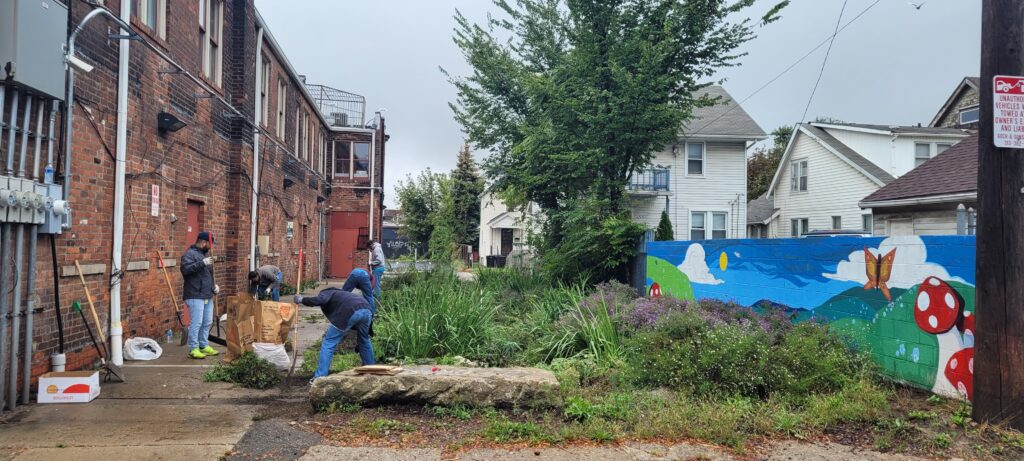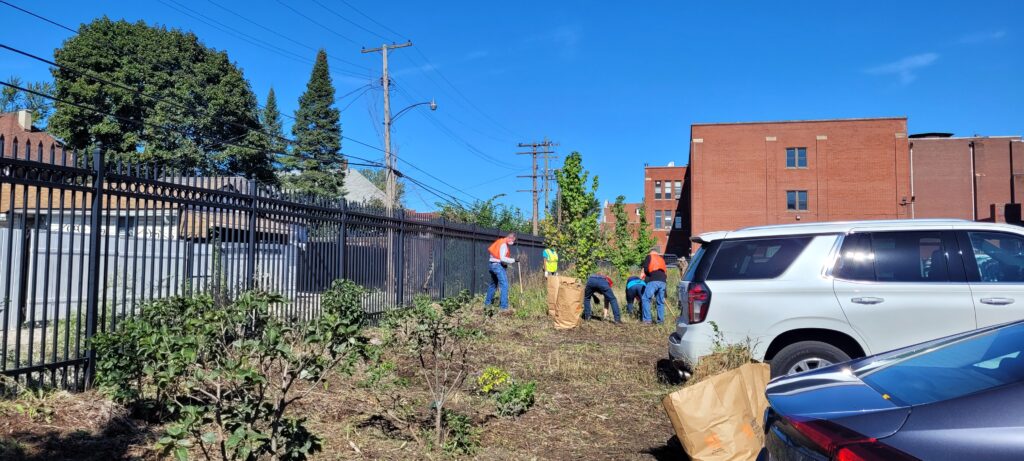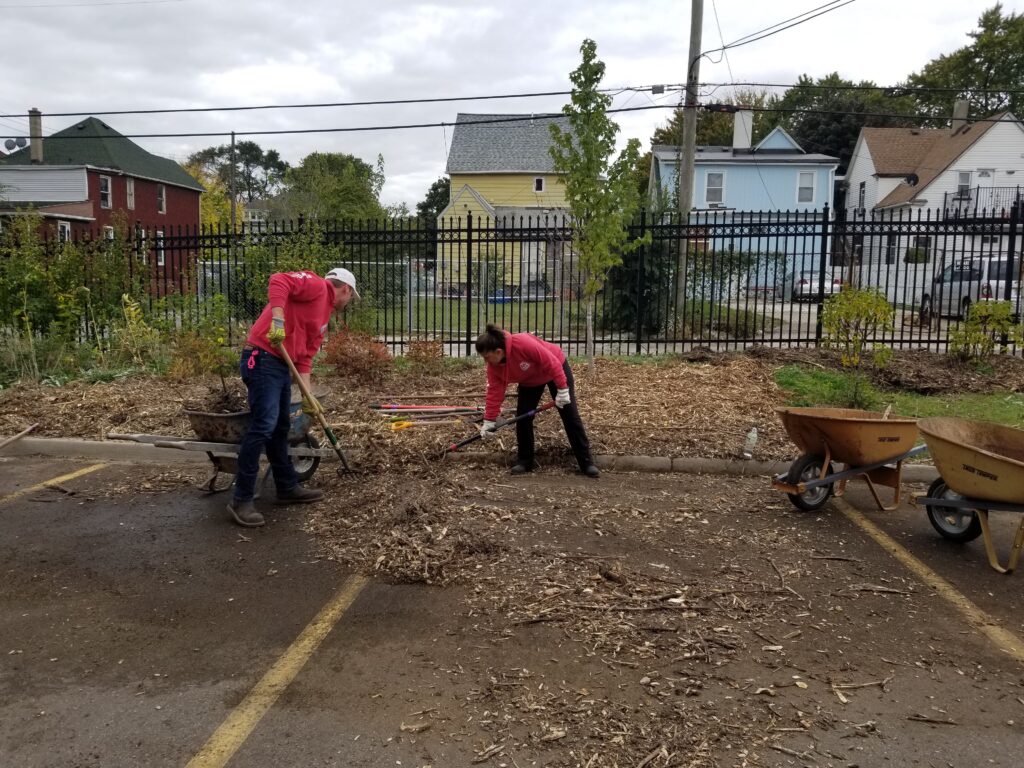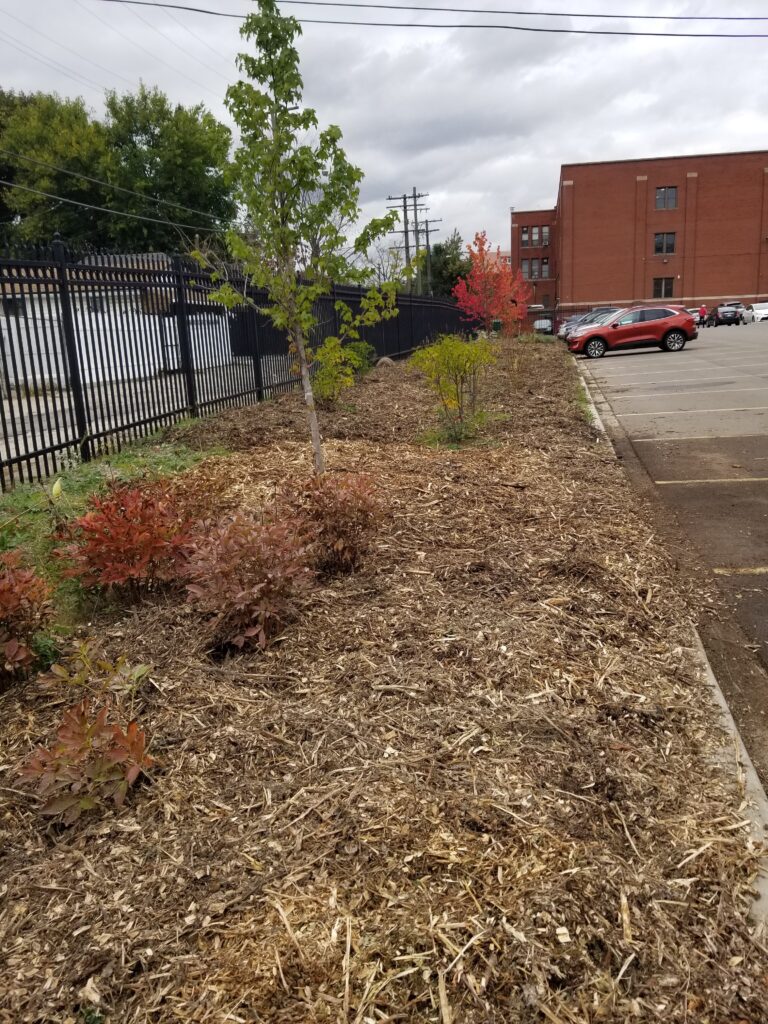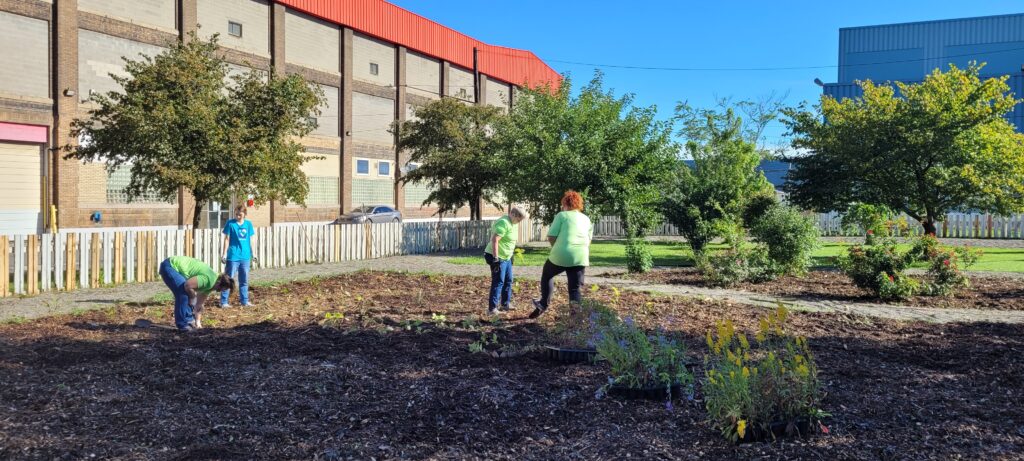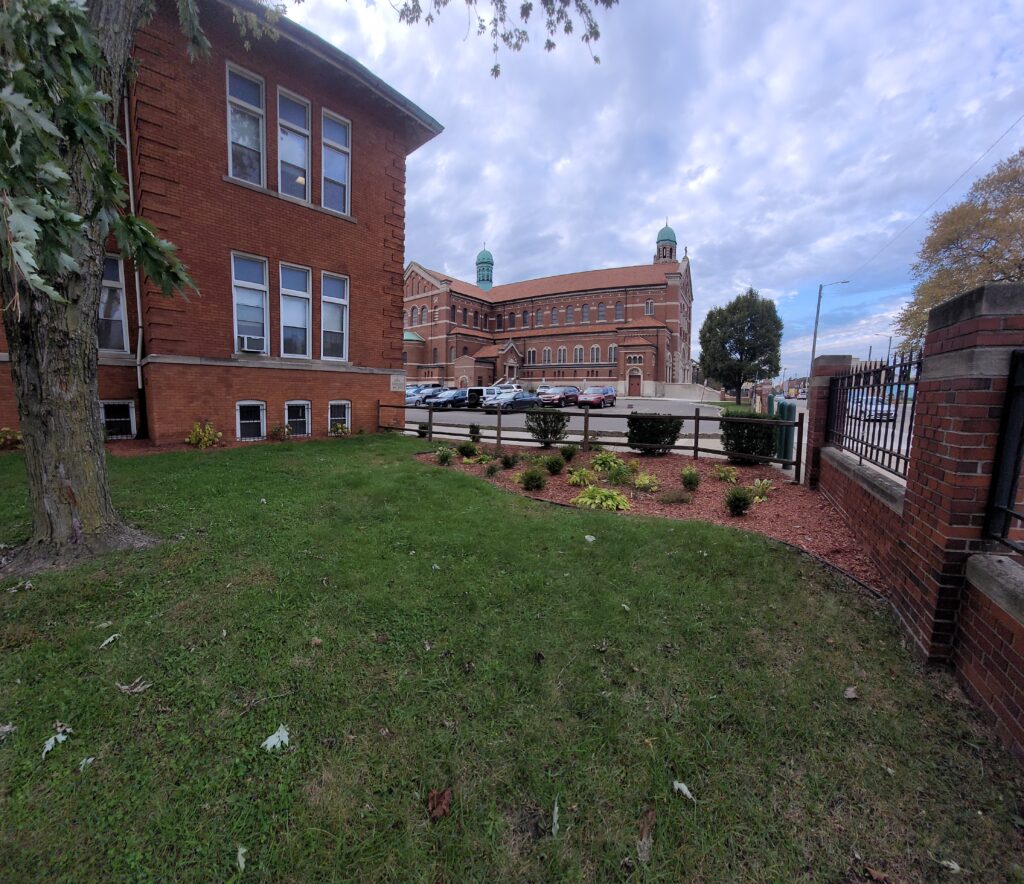Breaking the “Starving Student” Myth: Understanding and Addressing Food Insecurity Needs on Campus
The project: Food insecurity, a condition of limited or uncertain access to nutritious food, is a critical issue for students’ health, academic achievement, and future well-being. Recent studies, including one conducted at the University of Michigan in 2015, have shown unprecedented high levels of food insecurity on college campuses.
The process: This mixed-methods project assessed the current prevalence, risk factors, and consequences of food insecurity through an online survey representative of the U-M student body in winter 2018. Researchers also used in-depth interviews of 39 students to qualitatively explore the lived experience of food-insecure students as well as innovative strategies to address food insecurity on campus.
Results: Survey results showed the prevalence of food insecurity was 32%. Levels of food insecurity were higher among Black and Hispanic students, first generation students, and students receiving financial aid. Student food insecurity was associated with poorer diet quality, including lower intake of fruits and fiber and higher intake of added sugar. Student food insecurity was also associated with higher body mass indices.
Preliminary themes from the interviews included:
- students feel helpless in the face of food insecurity (e.g. “It’s hard to focus because of a lack of energy. It’s frustrating because I want to eat more, and I know it would help”);
- food insecurity affects students’ mental well-being;
- food insecurity affects students’ physical health (e.g. “I did kind of starve. It is just this feeling where you are numb.”;
- food insecurity affects students’ academic performance; and
- food insecurity is related to other basic needs insecurities (“e.g. “My parents are broke from giving my tuition. It definitely affects how much food I buy.”).
Cindy Leung, School of Public Health
Alicia Cohen, School of Medicine
Nicole Kasper, School of Public Health
Evaluating the Effectiveness of Bioretention Rain Gardens in Removing Pollutants Associated with Tire Dumping and Roadside Pollution
The project: Environmental justice research has shown that low-income neighborhoods and communities of color, such as those in Southwest Detroit, are more likely to experience higher levels of pollution. In Southwest Detroit, residential and commercial areas are in close proximity to ongoing heavy industries and high-volume transportation corridors, increasing concerns about the local air and surface water quality. These challenges are further exacerbated by illegal dumping, with piles of garbage, particularly used tires, frequently dumped in this community. These dumping sites may be accumulating toxic levels of heavy metals that can cause serious health issues such as cancer. This project aimed to identify strategies to transform dumping sites by constructing bioretention areas. Bioretention rain gardens utilize physical, chemical, and biological removal mechanisms to improve stormwater quality before it is discharged into the environment.
The process: Working closely with Southwest Detroit Environmental Vision and other Detroit organizations, this project contributed to the creation of three new rain gardens at Bieniek Park, Holy Redeemer Grade School, and Scarcyny Park & Garden, plus made improvements on existing green stormwater infrastructure projects to establish two additional rain gardens at Detroit Cristo Rey High School and the Southwest Detroit Business Association.
Results: In addition to contributing to the five rain gardens, this project also educated local residents and community organizations through Southwest Detroit Environmental Vision’s engagement in the Land + Water Works Coalition. This promoted a better understanding of the importance of bioretention in addressing poverty and environmental justice inequities through improving the quality of the local environment, reducing residents’ exposure to hazardous contaminants, and adding green space.
Larissa Larsen
Associate Professor of Urban and Regional Planning
U-M Taubman College of Architecture and Urban Planning
Sarah J. Clark
Director of Programs Southwest Detroit Environmental Vision

The stars on the map show the location of five rain gardens in Southwest Detroit supported by a Poverty Solutions 2018 faculty research project.
- Southwest Detroit Business Association rain garden
- GM Cares Week at the Detroit Cristo Rey High School rain garden
- Workers spread mulch at Detroit Cristo Rey High School rain garden
- Detroit Cristo Rey High School rain garden
- Scarcyny Park & Garden
- Holy Redeemer Grade School rain garden
Overcoming the chilling effect: Identifying strategies for improving immigrant families’ acceptability and accessibility to health and social services that alleviate poverty
The project: In March 2017, a commentary in the New England Journal of Medicine (NEJM) by two physicians called for research on the potential “chilling effect” that increased immigration enforcement under the new presidential administration would have on immigrant’s willingness to seek healthcare or government services. Given that the timely receipt of health and social services can be a successful poverty-alleviation strategy, this barrier to health and social services for immigrant populations could exacerbate and prolong poverty. Because healthcare and access to other social services is critical for preventing and alleviating poverty, neighborhood Federally Qualified Health Centers are a vital resource for immigrants living in the surrounding community. This project aimed to identify new and promising strategies for how these health centers can provide healthcare and social services to undocumented immigrants and their families in this context of increased immigration enforcement.
The process: Investigators at Community Health and Social Service Center (CHASS) in Detroit, Washtenaw Health Plan in Ypsilanti, Packard Health in Ann Arbor and the University of Michigan conducted in-depth interviews with 28 frontline healthcare and social service providers in 2018 to better understand the barriers to and facilitators of healthcare for their immigrant clients.
Results: The researchers found undocumented clients encounter three phases of delay: delay in the decision to seek care, delay in identifying and traveling to healthcare facilities, and delay in receiving adequate and appropriate care at healthcare facilities. Given the current socio-political climate for immigrants, they recommend healthcare and social services organizations that serve undocumented clients should adapt existing services or introduce new services, including those that are not site-based like telemedicine, home visits by providers, and harnessing a workforce of community health workers.
Paul J. Fleming, Ph.D., M.P.H., U-M Assistant Professor, Dept. of Health Behavior & Health Education, School of Public Health
William D. Lopez, Ph.D., M.P.H., U-M Postdoctoral Fellow, Dept. of Health Behavior & Health Education, School of Public Health
Richard Bryce, D.O., Chief Medical Officer, Community Health and Social Services Center (CHASS)
Assessing the Impact of Intergenerational Asset-Building Programs on Self‐Efficacy, Academic Achievement, and College-Going Culture of Low‐Income Black and Latino Girls
In the fall of 2015, Alternatives for Girls successfully piloted a new “Asset Building” model to encourage middle school girls and their families to academically prepare for high school, career and college, and to save for future post‐secondary education and training expenses.
The next phase of work will support up to 60 middle and high school girls and their families to prepare for success in school, career and college, and to save for future costs by matching funds saved by families for college costs.
Alternatives For Girls is focusing on enhancing program robustness, further engaging parents, and strengthening linkages to other college access resources in Detroit. Dr. Trina Shanks, of the University of Michigan School of Social Work, will assist AFG in identifying and implementing interventions that can strengthen the existing program to achieve more asset building and poverty alleviation results.
The partnership is committed to serving these girls on a long‐term basis, and aims that each participant will save $1,000 to $4,000 toward her education by high school completion. Each girl will graduate from high school and enter a post‐secondary education/training program, and will complete a post‐secondary training program, or at least the first two years of college.
Trina Shanks, University of Michigan School of Social Work
Melody Moore, Alternatives for Girls
Breaking the Cycle: Refining the Trauma-Informed Clinical Ethnographic Narrative Interview (CENI)
The project: In 2016, over 9,700 family households across Michigan, accounting for 24,766 people, entered an emergency shelter due to homelessness. The majority of these households were headed by a single female with one or two children under 11 years of age. Prior research has demonstrated that more than 90% of mothers who become homeless have significant histories of childhood trauma, as well as episodes of domestic violence and victimization in adult years. This project expanded upon an existing evidence-based intervention developed by a team from the University of Michigan School of Nursing and the Coalition on Temporary Shelter (COTS) in Detroit, which has been used with women to help them disclose and make meaning of traumatic life experiences as well as seek help.
The process: The research team worked closely with COTS, an agency that provides emergency, transitional, and permanent supportive housing services to families, to better understand the life events and needs of their clients through use of a Clinical Ethnographic Narrative Interview (CENI). This project refined and adapted the existing CENI approach to better align with the needs and preferences of COTS and its clients, while maintaining the scientific and theoretical underpinnings of the intervention.
Results: Researchers made revisions to CENI, including adding more positive words and phrases to a set of options presented when asking women to describe their experiences. Field testing revealed that this change resulted in a more positive interview experience overall.
Laura E. Gultekin, University of Michigan School of Nursing
Barbara L. Brush, University of Michigan School of Nursing
Denise Saint Arnault, University of Michigan School of Nursing
Delphia Simmons, Coalition on Temporary Shelter
Richard Bryce, Community Health and Social Services Center (CHASS)
Sharon Lapides, SOS Community Services
Kathleen Durkin, University of Michigan Department of Psychiatry
Charting How Wealth Shapes Educational Pathways from Childhood to Early Adulthood: A Developmental Process Model
The project: Wealth plays a pervasive and pernicious role in transmitting inequality. Wealth (assets like savings and financial holdings such as housing) differs from income (wages, salaries, and cash assistance from the government) and is generally more unequally distributed than income. This contributes to widening social inequality, including impacts on educational attainment. Wealth demonstrably impacts youth development and educational attainment, but the mechanisms resulting in this phenomenon had not yet been established. This project leveraged the Panel Survey of Income Dynamics to track family wealth, including identifying key opportunities to intervene across childhood and adolescence that could lead to higher educational attainment during adulthood.
The process: Using the Panel Study of Income Dynamics (PSID), researchers tracked families from 1984-2011, from pre-birth to early adulthood. The parent investment model provides a conceptual framework to understand how household resources allow parents to invest in the experiences, materials, and resources that foster the development and subsequent achievement of their children. This conceptual model depicts “direct effects” between wealth and educational achievement during childhood and adolescence as well as between wealth and educational attainment during adulthood. The model also depicts mediating relationships, or “indirect effects,” between wealth, parental and child mediators, and academic achievement as well as educational attainment outcomes.
Results: Key findings from this research, as published in the Journal of Youth and Adolescence, include:
- Wealth increased parental expectations of child performance, which led to educational achievement during the elementary school years. Wealth also fostered parents’ investment of time and money into their children’s education, learning and development, such as bringing children to museums or being involved at their school.
- Wealth played a different role in shaping educational success during middle childhood, adolescence, and the transition to adulthood. The greatest impact of wealth on educational success came in years 6-12, which echoes previous studies on income’s impact on success. Further, family wealth when children were making the transition to adulthood was directly linked to children’s postsecondary success.
- Family wealth during childhood was linked to children’s college success 17 years later. This finding parallels the income literature, which has clearly established that poverty and/or economic deprivation during early childhood is more consequential for later educational and occupational success.
Matthew A. Diemer, Combined Program in Education and Psychology & Educational Studies; Research Center for Group Dynamics, Institute for Social Research
Fabian Pfeffer, Department of Sociology and Institute for Social Research
Rashmita Mistry, Human Development and Psychology
Aixa Marchand, Combined Program in Education & Psychology
Supporting Economic Mobility through Community Mentorship
The project: The Eastside Community Network in Detroit and the University of Michigan School of Information evaluated the impact of the Lower Eastside Economic Mobility (LEEM) program, which connects residents with low incomes with mentors from the community, with the goal of addressing known barriers to stable employment such as low self-efficacy and limited access to social support. This evaluation aimed to answer three research questions:
- What is the impact of the LEEM program on participants’ psychosocial development (i.e., hope, self-efficacy, self-sufficiency, and social support)?
- How do participants perceive the program’s impact on their economic and psychosocial development? How do participants perceive the usefulness of the mobility mentoring model in supporting their mentoring relationships?
- What opportunities exist to support similar mentoring programs with digital tools?
The process: Researchers designed a survey, which was given to LEEM participants when they started the program as well as three months later. Researchers also interviewed 30 participants and two staff members connected to the program.
Results: Preliminary results from the surveys suggest increases in hope, self-efficacy, and hope for employment. After three months, the data suggest participants experienced a slight decrease in social support. As far as participants’ perceptions of their economic and psychosocial development, interviews indicate participants started to see themselves as leaders, had a positive experience in the program, and the program’s meal clubs offered an important socializing experience. Participants also described the importance of their relationship with program coaches.
Even though program participants were assigned community mentors, participants perceived two staff members who served as program coaches as their main mentors. While the relationship with the coaches proved valuable to participants, more study is needed to determine how to better support the mentor relationships.
Tawanna Dillahunt, University of Michigan School of Information
Donna Givens, Eastside Community Network
Angela Brown Wilson, Eastside Community Network
Eliminating the Path to Energy Poverty: A Multi-State Analysis of Equity in Energy Efficiency Investments
The project: Energy poverty, or the gap in energy affordability, is a burden on low-income households amounting to millions of dollars in utility arrears. This burden negatively impacts a household’s long-term health, education, employment, and financial stability. Energy efficiency offers an opportunity to address energy poverty through energy waste reduction measures such as LED lighting, energy-efficient HVAC systems, and insulation. Current state policies requiring utility-managed energy efficiency programs, aimed at producing statewide reductions in energy demand, often distribute funding and program benefits disproportionately across socioeconomic groups, although a spectrum of policy measures exist that should steer policy investments and outcomes towards greater equity. This study evaluated the current state of equity in energy efficiency programs across state policies and estimated the impact on the state’s home energy affordability gap if program investments were more equitable. Using a new metric called the equitable energy efficiency (E3) baseline, researchers measured the effectiveness of state policies at achieving equitable outcomes for low-income households.
The process: To compare equity in energy efficiency investments across states and electric utility companies, researchers developed a normative baseline metric for utility spending on low-income customers. This metric, known as the Energy Efficiency Equity baseline (E3b), accounts for the proportion of the population defined as low-income in a utility’s service territory and the total annual residential energy efficiency investment dollars. The E3b accounts for differences in policy approaches as well as socioeconomic characteristics per utility territory and each year. Researchers used the E3b to evaluate energy efficiency investments among low-income populations by 11 large utility companies in six states, from 2012 to 2021.
Results: The analysis resulted in the following key findings:
- The E3b is a useful metric for evaluating utility performance from an equity perspective. It can be used to compare among utilities and within states, among utilities with small to large portfolios, and utility performance over time. E3b provides flexibility for existing and future variations in state policy approaches, while accounting for the socioeconomic characteristics within utility service territories.
- Results suggest that while most utilities are underperforming relative to the E3b, positive investment trends are estimated into 2021. This is likely the result of a combination of factors: utility decision-making, stakeholder interventions, and state policy adjustments.
- State Energy Efficiency Resource Standards policies aimed at achieving equity in energy efficiency should integrate factors including: socioeconomic characteristics of each utility territory, low-income program qualifiers, proportion of the population qualified to participate in these programs, and the total size of the residential portfolio investment.
Tony G. Reames, School for Environment and Sustainability
Ben Stacey, School for Environment and Sustainability, Taubman College of Urban & Regional Planning
The Politics of Technology for the Poor: Between India and the World
The project: Technological innovation seems to have enormous potential to improve the lives of the poor, from improving sanitation to increasing access to education. But these interventions often have limited user interest and uptake. This project examined whether we can do a better job of leveraging technology for the poor, with a specific focus in India. This project investigated the politics that shape development of these technologies, both at the international level and within India. Understanding these politics is a key step toward transparency in policymaking and toward ensuring that technologies are chosen and implemented in ways that poor citizens want and need.
The process: Researchers did fieldwork in India to compile an in-depth case study on technological advances related to sanitary pads available to Indian women in poor, rural areas. Researchers conducted 60 interviews with researchers, entrepreneurs, non-governmental organizations, and government personnel involved with menstrual health and hygiene management innovations for the poor; attended training sessions; and conducted reviews of academic and policy literature as well as news media on the topic.
Results: Researchers found existing development initiatives focused on menstrual health and sanitary pads in India can actually disempower women as knowers and innovators. Much attention has been paid to Arunachalam Muruganantham as the developer of affordable sanitary pads who also built machines for manufacturing them. He sells these machines to women’s self-help groups across India so they can start businesses selling these pads, become social entrepreneurs, and rise out of poverty. However, researchers noted that publicly celebrating Muruganantham’s contributions can erase and denigrate hundreds of years of innovation by Indian women in managing their menstruation. The research points to the need to start by asking poor and rural women about the biggest problems they face in an open-ended way and amplifying their knowledge and innovation.
Shobita Parthasarathy, Ford School of Public Policy
Helping Across Generations: An Exploratory Study of Blue Collar Workers’ Retirement Well-Being
The project: With today’s young adults facing increasing financial pressures, it is parents that often come to the rescue. Older adults from working-class backgrounds often provide help to their adult children and extended families, which can affect family relationships and their own economic well-being, particularly in retirement. This project explored the impacts of these arrangements and suggest needed reforms to the social safety net and to the ways we think about retirement so that poverty is both alleviated and prevented.
The process: Researchers interviewed 23 retirees associated with local chapters of the United Auto Workers, unions representing the custodians and groundskeepers at U-M, and the Michigan Association of Retired School Personnel about the types and frequency of help provided to their adult children and extended kin; how help is negotiated; how the provision of help affects economic and emotional well-being; and how provision of help is balanced against one’s own needs in retirement.
Results: Preliminary findings led to additional funding from the Russell Sage Foundation to expand the study to 65 retirees and conduct follow-up interviews with participants.
Kristin S. Seefeldt, U-M School of Social Work and Gerald R. Ford School of Public Policy

